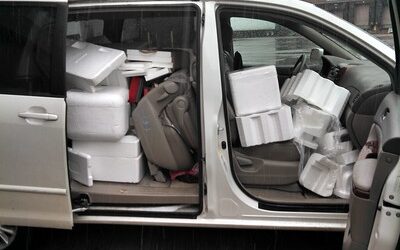Fuel efficiency, maintenance and how we drive our vehicles determine how much gas we use. Great tips are at your fingertips, including steps to take before you leave your driveway. See below.
- Rethink that large car – can you get by with a smaller one? Can you rent a large car or an SUV when you really need one and drive a fuel–efficient car the rest of the time? Can your household manage with one less car or experiment with car-free days?
- Learn about the new hybrid and electric car models. Visit Green Car Reports, Fuel Economy.gov and ELPC’s Plug-Ins or search “fuel–efficient cars” for information on your best green car choices.
BEFORE YOU PULL OUT OF THE DRIVEWAY
- Tune up your engine and improve gas mileage up to 4%.
- Replace a clogged air filter and boost efficiency up to 10%.
- Pump up your tires and check often, and improve gas mileage up to 3%.
- If you have two cars, always choose the one with the best mileage.
- Plan your route to reduce idling – up to 1/3 of your fuel is wasted through idling.
- Lose those extra pounds. You lose 1 – 2% fuel efficiency for every extra 100 pounds in your car.
- Take the rack off your car. Use rear-mounted bike racks, not roof mounted.
- Be mindful of the miles you drive and try to cut back.
WHEN DRIVING AROUND TOWN
- Accelerate slowly.
- Anticipate stops and slowdowns, decelerating steadily to save gas.
- Reduce idling – turn your engine off when you stop even for a minute or two – trains, long lights, school pick ups, road work back ups, etc.
- Combine errands and choose the shortest route.
- Consider the impact of all that driving when choosing activities for your children.
WHEN DRIVING ON HIGHWAYS
- Maintain a steady speed and use cruise control. For most vehicles, 55 mph is most fuel-efficient speed and will save you up to 20 – 30% in fuel costs compared to driving at 75 mph. It is also safer.
- Consider taking a train instead of driving long distances. Chicago is a hub for Amtrak.


